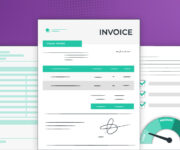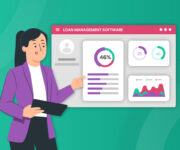Vijay Mallya, Anil Ambani, Pramod Mittal, Nirav Modi—something strikes, doesn’t it? Whilst most of you are familiar with these names, some of you might also be aware of their not-so-happily-ever-after entrepreneurial journey; who were once “Business Tycoons” are now on the list of notorious bankrupts. As much as their lavish lifestyle sparked our interest, when they went bankrupt, the public was much more galvanised. But who knows if it was a stock market crash, economic setback, or negligent splurging?
Amidst all this, it is imperative to not fall into this vicious cycle of bad debt and ensure that companies or banks lend money cautiously.
Understanding Bad Debt and Bad Debt Recovery
To put it simply, when credit is extended to customers, and they fail to repay the amount, it is declared as bad debt. A bad debt situation occurs when a customer has no intention of paying the seller or has misrepresented himself in obtaining credit. A receivable is considered a bad debt if it is irrecoverable.
When a business/company gives credit to their customers, they must always consider the possibility of bad debt. In accounting terms, bad debt is an expense since it has to be charged against the company’s account.
In most cases, the customer cannot pay the credit amount due to insolvency or bankruptcy.
However, in some cases, it may happen because the customers were ill-suited or fraud. This further raises doubts and questions on the lending strategy and criteria of the businesses.
What comes as a ray of hope for creditors is that any debt written-off as bad also comes along with the possibility of being recovered either partially or fully. This amount is included in the accounts as an income. A bad debt may turn into recovery by selling off the borrower’s collateral or taking legal action.
On a positive note, over the last few years, the government has stepped up in executing the Insolvency & Bankruptcy Code over the last few years. Due to the strengthening of laws, banks could recover almost Rs.5.5 lakh crore as of 26th July 2021. Additionally, the National Asset Reconstruction Company has dedicated Rs.30,600 crore towards resolving bad debts.
Why Lending Businesses Need Debt Recovery Strategies
From a business perspective, recovering the bad debt is a challenging task and immensely time-consuming. The process is tedious, from lending money to recovering it, although bad debt is an inevitable part of the process.
Bills Receivables or Debtors are a fundamental part of any working business. It is imperative to be cautious. Excess bad debt is detrimental and may cause the company to go insolvent.
Prerequisites for Lending Money
A loan is followed by a risk. The future is unpredictable, yet a debacle can be avoided. Therefore, the first and foremost prerequisite for any business to consider when lending money is understanding the borrower’s background. Let us cover a few critical points that lending businesses must consider to reduce the risk.
1. Analysis of the financial health of a customer:
Carrying out a detailed analysis of a customer’s financial health is important. Although several data sources are available to parse their financial information, ensuring that you follow data privacy laws is crucial. With the help of a customer’s personal and confidential information, you can understand their creditworthiness. For example, you can check if they can repay the loan from current account status, rental history, real estate ownership to employment status, and income levels. This information, along with their credit score and availability of collateral, will help you make a healthier decision.
2. Thin Profile:
A user profile with an inactive credit card account is categorised as a thin profile. Similarly, customers who use cash for purchasing have a thin profile too. A thin profile adds up to a bad credit score. Although assessing such a profile thoroughly is not the sole prerequisite, it is significant while deciding their eligibility for a loan.
3. A Blend of Traditional and Modern Credit Assessment:
Digitalisation is our way out of the bad debt. Along with the traditional credit assessment approach, it is also important to consider modern loan origination systems. These systems provide out-of-box integration with alternative credit data sources via APIs. This consolidated data can then be evaluated to assess creditworthiness or be sent for AI-assisted manual underwriting.
4. Role of CRMs:
Customer-Relationship Management allocates borrowers to particular teams, which further eases the lending business process. CRMs can categorize borrowers and recommend collection strategies.
Guide to Recover Bad Debt
What to do if a bad debt has already been written off and it is too late to be cautious? There are a few bad debt recovery strategies that may direct the lender towards a positive recovery. Although, this doesn’t mean that you pay no heed to reduce the risk.
Even if a borrower has a healthy financial record, things may topple sometimes.
Here are some instructions from experienced lenders to save the day –
1. Formal Letter:
Sending a letter to the borrower may not guarantee the recovery, although using stringent language whilst drafting the letter may express the seriousness of the situation. Collections CRM can also send a formal email based on “Days Past Due” on behalf of the lending business.
2. Taking the help of a debt collection agency:
A debt collection agency is like a mediator between the lender and borrower. They function on a contingency agreement, and a certain amount of the recovered money is kept with them. Acknowledging the relationship between the lending business and the borrower, they communicate effectively with borrowers through phone calls or emails. From persuading debtors to developing a payment plan with them, debt collection agencies also assist lenders in filing the lawsuit, if required.
3. Legal Response:
If none of this works and the debt amount is enormous, you may want to consider legal options. However, this doesn’t guarantee success, and a court case brings a lengthy process and a hefty price. It is advisable to consider a court claim only if the amount is high enough.
Conclusion
In any case, prevention is always better than cure. Before you lend, aim towards correctly assessing the customer. Once you lend money, track every step of the debtor and maintain communication. Finezza can be used to track and manage credit applications and assess lending risks. In an era of digitalisation, it is imperative to shift the lending landscape, and Finezza helps with this by streamlining the lending process.




Leave a Reply